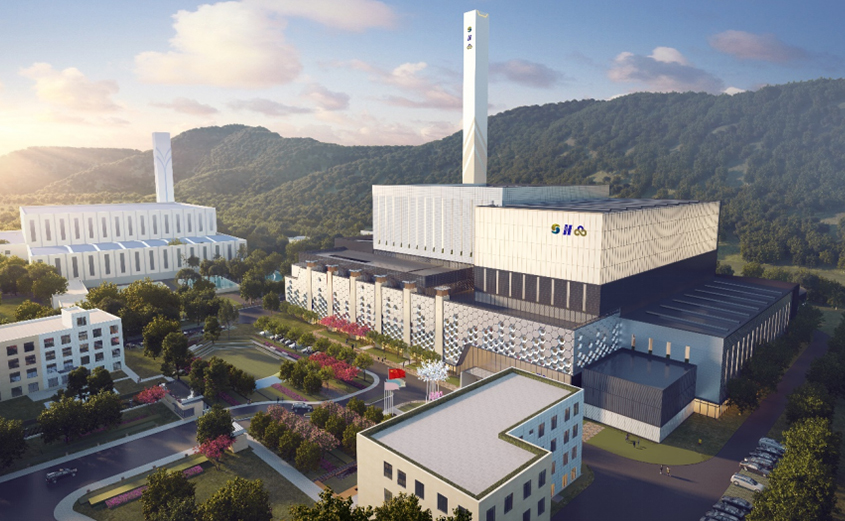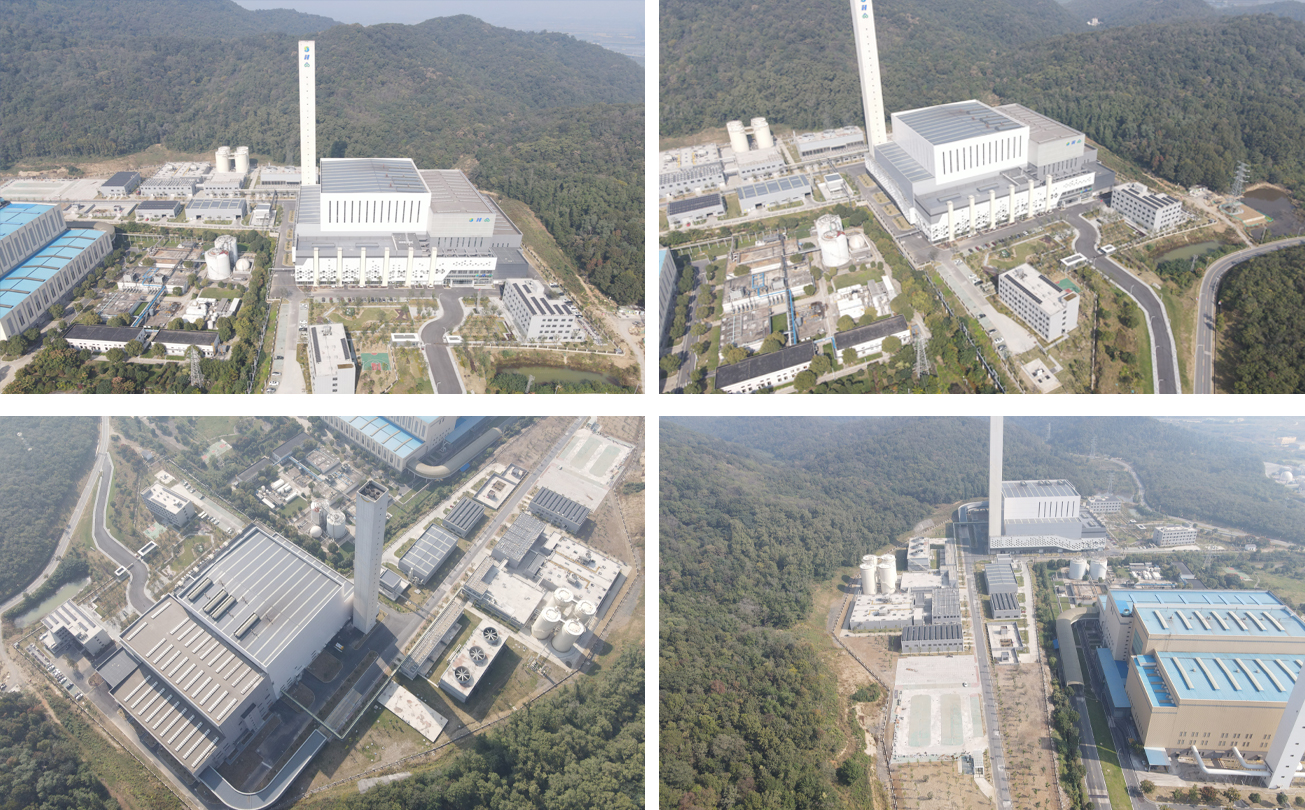Scan the QR-Code to Follow our WeChat Official
Account to Get the Latest News

Project address:No.1-1, Dongzhuang Road, Xingdian Street, Pukou District, Nanjing, Jiangsu Province, China Nanjing Jiangbei Environmental Protection Power Co., Ltd.
Appointment visit contact phone number:+86 025-58885590
The phase II project of the Nanjing Jiangbei Waste-to-Energy Plant is strategically positioned within the Jiangbei Environmental Protection Industrial Park, closely integrated with its surroundings. The Nanjing Project boasts a processing capacity of 2,000 tons per day, primarily handling domestic waste from Pukou District, Jiangbei New Area, Gulou District, Qixia District, and Qinhuai District in Nanjing, serving a population exceeding 2 million.
Furthermore, the phase II initiative constitutes an indispensable component of Nanjing's "Four New Construction System Engineering" and plays a pivotal role in enhancing sewage and waste treatment capacities along the Yangtze River Economic Belt. It has received substantial attention from the Nanjing Municipal Committee and the Government, consistently being prioritized as a key project in the city’s urban construction plans for multiple years. This underscores its dual significance in improving local environmental conditions and aligning with broader regional development and environmental preservation endeavors.


1. Synthesis of Industrial Aesthetics and Public Engagement
Embracing a de-industrialized ethos, the project's design integrates energy-efficient shading facade systems with populist symbolism drawn from Nanjing's historical legacy during the Six Dynasties period. Evoking the diligence of honeybees and the communal spirit of beehives, it embodies the ethos of SUS while harmonizing traditional Chinese architectural elements with modern glass structures, imbuing the facility with a distinctive Nanjing identity.

2. Advanced Equipment Configuration
The project incorporates cutting-edge Danish Topsoe catalysts, renowned for their superior removal rates, minimal ammonia escape rates, and high resistance to deactivation, SO2/SO3 conversion rates, with long mechanical lifespans, resistance to deactivation, and recyclability. The catalyst's mechanical lifespan is no less than 20 years, with a chemical lifespan of no less than 24,000 hours. Complementing these catalysts are Danish Niro atomizers, renowned for their remarkable atomization speeds of up to 13,500 rpm. These atomizers efficiently disperse lime slurry into fine droplets, averaging between 30-50μm in size. Consequently, the system ensures effective semi-dry desulfurization, consistently meeting stringent EU standards (2010/75/EU).
3. Ultra-Low Emission Flue Gas Purification Technology
Adopting internationally advanced flue gas purification technology, the project combines SNCR (Selective Non-Catalytic Reduction), rotary spray semi-dry desulfurization, and advanced activated carbon injection adsorption, baghouse dust removal, SGH (Selective Catalytic Reduction by Hydrazine), and SCR (Selective Catalytic Reduction). This comprehensive approach not only exceeds EU standards (2010/75/EU) but also sets new benchmarks in emission control.
4. Educational Outreach Initiative
Featuring an internal exhibition area designed for scientific, educational, and public demonstration, the facility seamlessly integrates process equipment display areas, waste sorting exhibits, and interactive multimedia installations. The immersive experience enhances visitors engagement and fosters a deeper understanding of energy utilization principles.
1. Synthesis of Industrial Aesthetics and Public Engagement
Embracing a de-industrialized ethos, the project's design integrates energy-efficient shading facade systems with populist symbolism drawn from Nanjing's historical legacy during the Six Dynasties period. Evoking the diligence of honeybees and the communal spirit of beehives, it embodies the ethos of SUS while harmonizing traditional Chinese architectural elements with modern glass structures, imbuing the facility with a distinctive Nanjing identity.

2. Advanced Equipment Configuration
The project incorporates cutting-edge Danish Topsoe catalysts, renowned for their superior removal rates, minimal ammonia escape rates, and high resistance to deactivation, SO2/SO3 conversion rates, with long mechanical lifespans, resistance to deactivation, and recyclability. The catalyst's mechanical lifespan is no less than 20 years, with a chemical lifespan of no less than 24,000 hours. Complementing these catalysts are Danish Niro atomizers, renowned for their remarkable atomization speeds of up to 13,500 rpm. These atomizers efficiently disperse lime slurry into fine droplets, averaging between 30-50μm in size. Consequently, the system ensures effective semi-dry desulfurization, consistently meeting stringent EU standards (2010/75/EU).
3. Ultra-Low Emission Flue Gas Purification Technology
Adopting internationally advanced flue gas purification technology, the project combines SNCR (Selective Non-Catalytic Reduction), rotary spray semi-dry desulfurization, and advanced activated carbon injection adsorption, baghouse dust removal, SGH (Selective Catalytic Reduction by Hydrazine), and SCR (Selective Catalytic Reduction). This comprehensive approach not only exceeds EU standards (2010/75/EU) but also sets new benchmarks in emission control.
4. Educational Outreach Initiative
Featuring an internal exhibition area designed for scientific, educational, and public demonstration, the facility seamlessly integrates process equipment display areas, waste sorting exhibits, and interactive multimedia installations. The immersive experience enhances visitors engagement and fosters a deeper understanding of energy utilization principles.



Scan the QR-Code to Follow our WeChat Official
Account to Get the Latest News